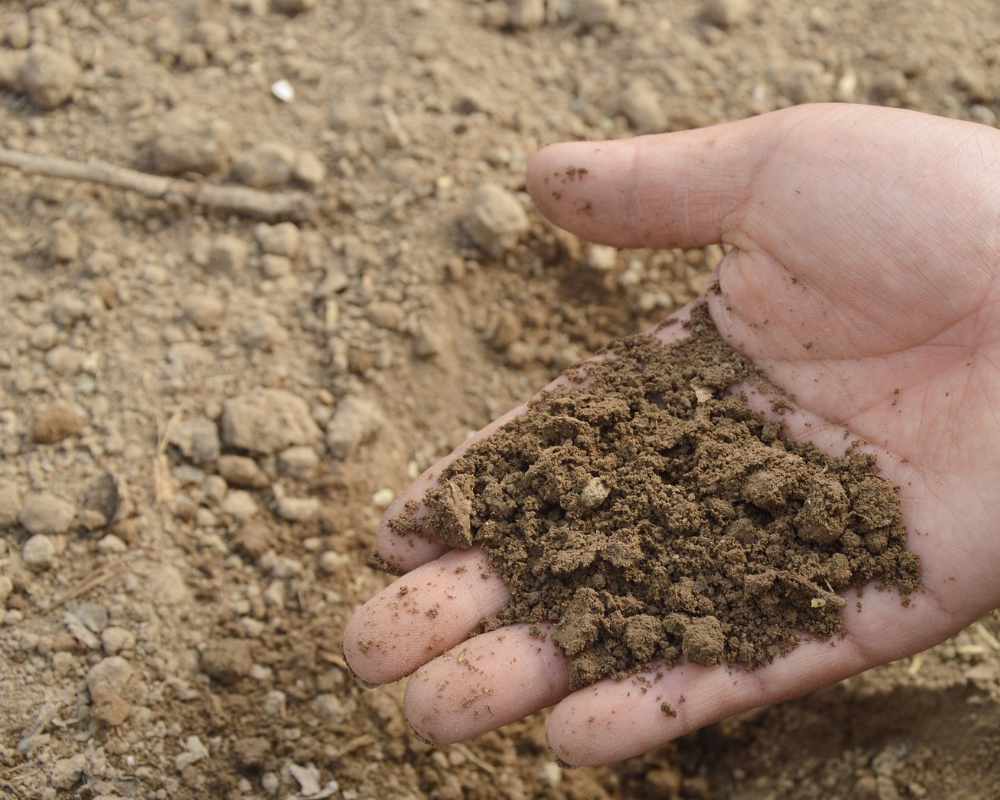At our Monday Meeting, Howard Drury DHE(Hons), offered us the endless depth and extent of his knowledge and experience of gardening and getting the best out of clay soils.
Having learned his craft the hard way – making other people rich by his labour – Howard was persuaded to authenticate his skills and for three years joined Edinburgh Botanics graduating with Honours. Some might remember seeing him on one of the 611 programmes he did for “Gardening Time” from Pebble Mill.
He first focused on the PRINCIPLES OF PLANTING IN CLAY SOILS:
- plant late, ground slow to warm up
- use a permeable membrane to cover and warm up the ground (Myplex recommended)
- raised beds are a well-controlled option, particularly for the smaller garden
- plant high, with a domed finished level, enabling roots to develop out of wet soil
- choose suitable plants for this type of soil
- always consider planting decisions suitable for present weather conditions – wet spring, dry summer, cold summer, such as this years’ experience
- expect to crop early.
Howard then explained some of the ramifications of the above points. Clay is the most fertile soil, but that fertility has to be suitably managed. Clay soils retain nutrients well so they are not ‘hungry’ and adding lots of fertiliser might be a waste of money at best but can actually damage the soil. Calcium is retained and there is no need for lime; they hold water and are less prone to drought.
On the other hand, they hold too much water in wet weather and can become waterlogged causing problems for root growth if the soil is compacted. But when the soil dries out, it actually shrinks and deep cracks form which can damage roots and foundations, and disrupt the surface of lawns. Poor air penetration and strong water retention means that clay soils are slow to warm up in Spring, delaying seed germination. Therefore, to grow successfully on clay soil you must minimize the difficulties whilst taking full advantage of the benefits. You should also bear in mind the ways in which climate changes are impacting on your planting regimes, and make your plans accordingly
Fertility in clay soil is only released if suitably managed. Care is needed not to damage the soil, and some of the GOLDEN RULES going hand-in-glove with the above are:
- keep off clay soil when wet. Walking over it will compact the soil and make it heavier
- lay down wooden boards to spread your weight if you need to have some access
- never dig or plant when it’s wet
- level the ground and incorporate organic matter when ready
- leave the soil surface in ridges over winter for the frost to break up the clumps
- put the manure on the ridges and rake in when readying for planting.
- plant trees and shrubs ‘high’ – form a slight mound in the planting hole to keep roots clear of wet soil and any danger of pooling having broken into the soil. Finish with a higher level than surrounding soil
We then had a Masterclass on DIGGING, TRENCHING AND RIDGING. Howard is not a fan of the ‘no-dig’ method!
- Single digging – one spade depth,
- Double digging – two spade depths, moving first removed soil to what will be the last trench dug.
- Having created the trench, fork over base lightly and add organic matter
- Dig in Autumn
- Never dig in Spring
- Never dig when wet OR dry
- No rotavators
- Place manure on ridge top and leave for the weather to break down the clumps. The manure will be raked into the ground when it is ready for planting.
- When planting, always create a MUCH BIGGER hole than the plant pot, forking the sides to open the hardened surface
Now the foregoing are the basic principles, and I make no apologies for plagiarising most of the above from Howard’s lecture notes. I have given you the main points, good and bad. For detailed management and comprehensive guidance including recommendations for trees, bulbs, shrubs, ground cover, lawn care, potato research results and land drainage ideas – evidently you can legally flood your neighbour (so long it is not a public entity) – I must leave you to contact: www.thedrurys.com or for the non-computerised 0121 443 3212. Howard’s final advice was to remember we can’t change the soil but must work with what we have.

